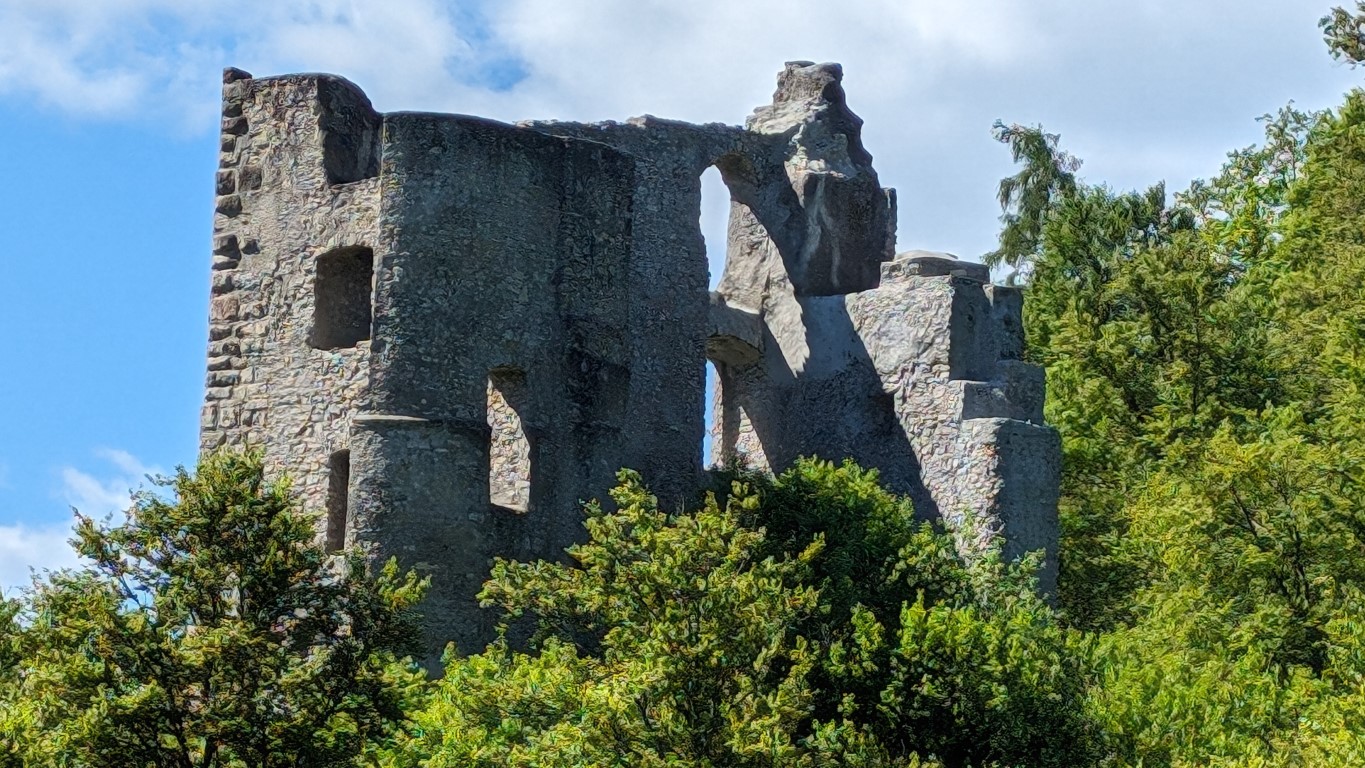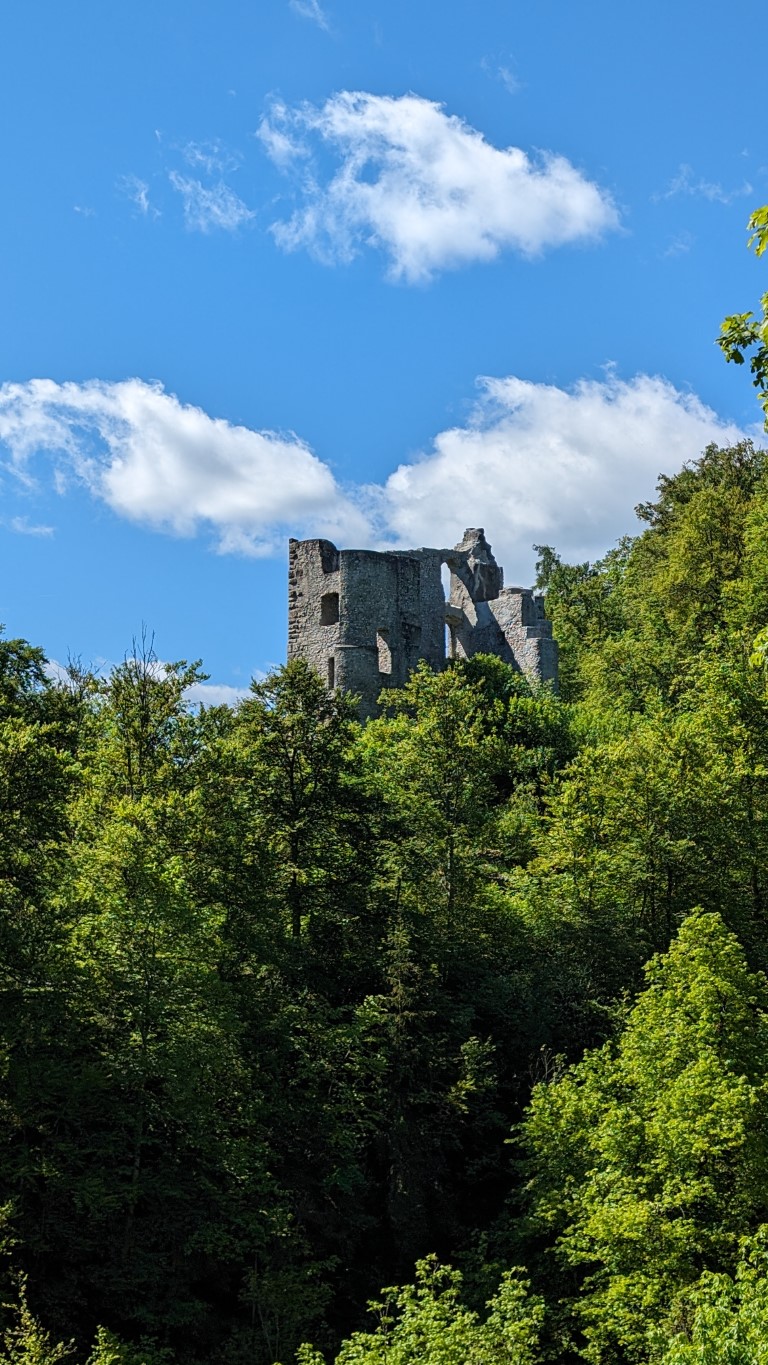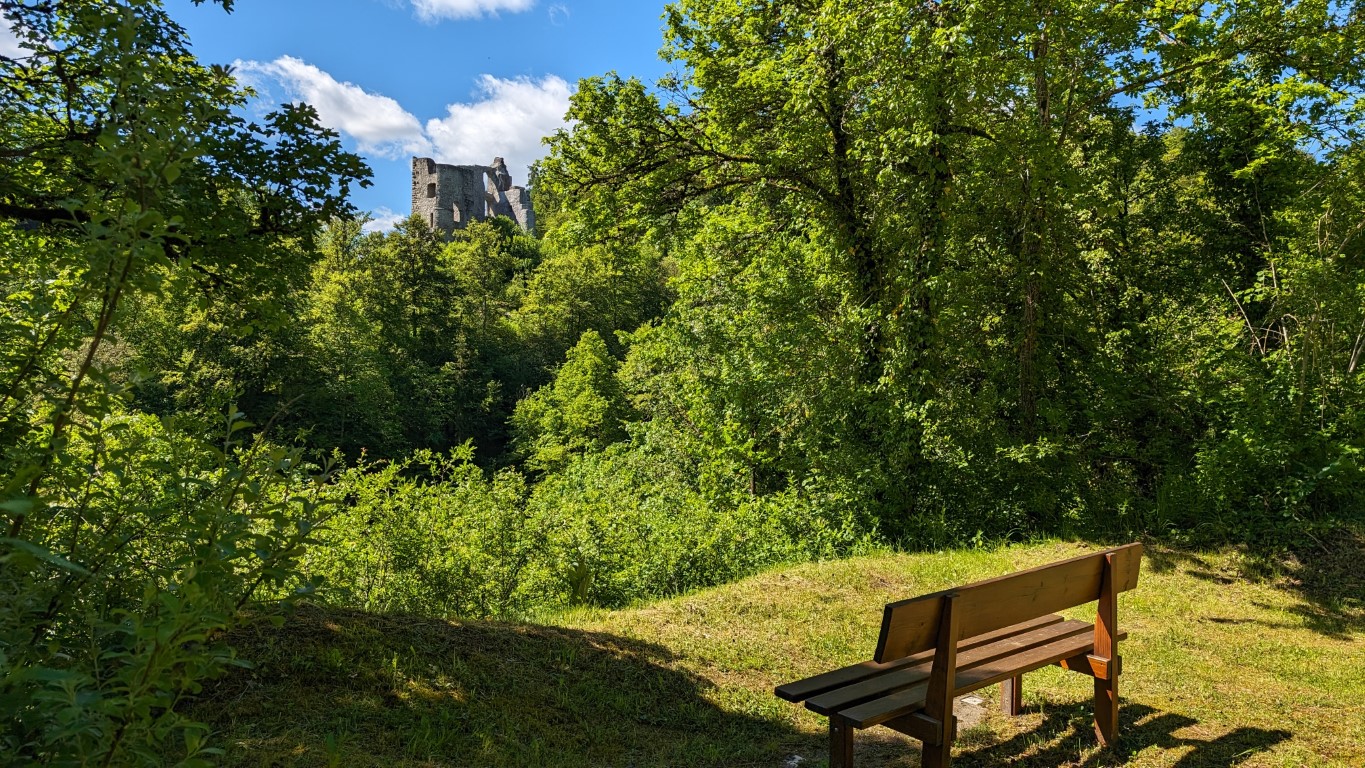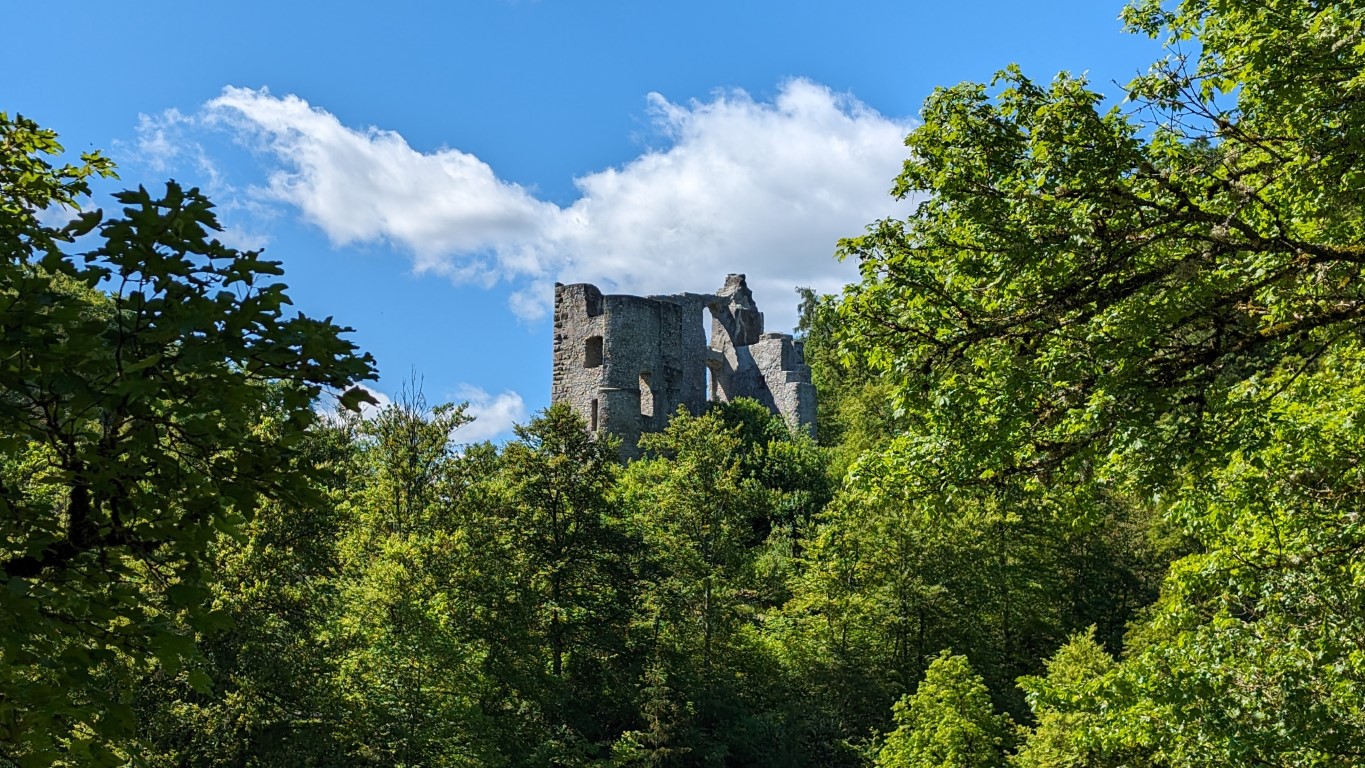To the east of the picturesque village of Herrenzimmern, on a mountain spur surrounded by deep ravines, the imposing remains of the once proud Herrenzimmern Castle rise up. This majestic ruin, once the ancestral home of the noble family of the Lords and Counts of Zimmern, bears witness to a glorious past. Important members of this family included Count Wilhelm Werner (1485-1575) and Froben Christoph von Zimmern (1519-1566), who wrote the famous "Zimmer Chronicle".
The castle, which was first mentioned in the 11th century, owes its current appearance to the reconstruction by Wilhelm Werner after a devastating fire at the beginning of the 16th century. After the male line of the family died out, the castle was sold to the imperial city of Rottweil in 1595 and acquired by the municipality of Herrenzimmern in 1810, which allowed it to fall into disrepair.
Today, large parts of the castle's massive, up to four-storey high walls are still standing. In 2007, a place of reflection was created in the romantic ruins of the former castle chapel, which is decorated with a bronze relief of St. James by the Rottweiler artist Tobias Kammerer. This oasis of peace invites visitors to immerse themselves in the mysterious atmosphere of the past and feel the magic of this historic place.
The Rottweiler Donkey
In the days when Rottweil was still a free imperial city, the citizens discovered a huge pumpkin in a field, which they thought was an egg. However, they could not determine which bird could have laid such an egg. To solve the mystery, they decided that the mayor should hatch the supposed egg. Despite his protests and many objections, he was given a deadline within which he had to hatch the egg.
When nothing had hatched after the deadline, the townspeople decided that the egg was probably spoiled and threw it over the city wall. The pumpkin crashed to the ground with a loud bang and a frightened rabbit that had been sleeping on the wall jumped away. The townspeople who saw the rabbit were convinced that it had hatched from the egg and shouted: "Look, a donkey!" Since then, Rottweilers have been nicknamed "donkeys".
A painter who knew this story painted a donkey on the city flag of Rottweil. He depicted Christ's flight to Egypt and used watercolors for this, but for the donkey he used oil paints. When heavy rain fell during a procession, the watercolors were almost completely washed away, but the donkey remained intact on the flag.
Access
If you follow the B14 from Horb to Rottweil along the Neckar, you can reach the turnoff to Epfendorf by car. From there, a partially winding road leads via Bösingen to Herrenzimmern. The castle ruins are located east of the town, hidden deep in the forest, and can be reached via a signposted access path from Herrenzimmern.







